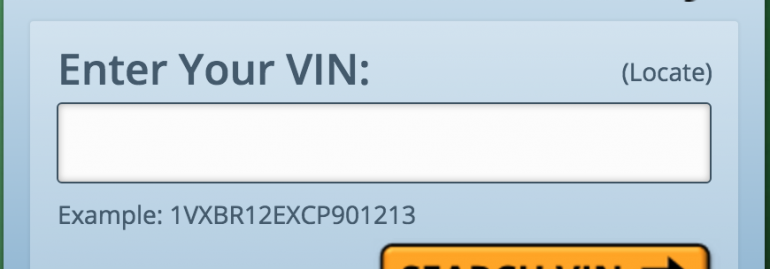

The last six characters represent the serial number. The tenth digit represents the model year of the vehicle, and the eleventh digit shows the authorized plant which assembled the vehicle (table below). The ninth digit represents the security code that classifies the VIN as approved by the maker. The fourth and the eighth characters represent the vehicle attributes such as brand and the size. The second and third digits shows the maker or the manufacturer, and the car type respectively. The first digit shows the country where the vehicle was manufactured. Some cars may have it on the firewall, steering wheel, and radiator support bracket. Door frame (left-hand inner wheel arch) The VIN is unique to the vehicle the way your fingerprint is unique to you, and it's how we are able to deliver critical vehicle specific data in the AutoCheck vehicle history report. Here are some common VIN locations on the car: Most, if not all, online marketplaces for cars require sellers to post with the VIN so you can do a VIN lookup quickly.

The VIN is indicated in vehicle title, registration, and insurance documents. Therefore, you get the correct and up-to-date data about a particular car.

The data stored here is continuously updated and more data added. The information about vehicles stored in VIN decoder includes features such the engine, the make of the car, model, transmission type, the year when it was produced, the place of manufacture, production number and much more. With immense data about all the vehicles, it can access and provide details about any carrier. A vehicle identification number (VIN) is a unique code that is assigned to every motor vehicle when it's manufactured. VIN decoder works straightforwardly.


 0 kommentar(er)
0 kommentar(er)
